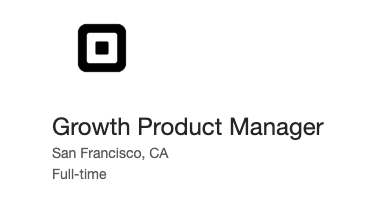Updated: April 25, 2024- 6 min read
There’s Product Managers, and then there’s Growth Hackers…so why should PMs bother themselves with growth? It’s true that Product Managers don’t have to be expert marketers, but the best Product Managers have multidisciplinary talents. While marketing may not be your forte, growth is in integral part of product development and market strategy.
If you want to build trust with your user base, improve your customer acquisition, and build successful products…you should be a growth hacker! Just because you’re focusing on building the best product experiences for your users, doesn’t mean you shouldn’t also be focused on reaching them.
What Does ‘Growth Hacker’ Mean?
Different people have different opinions of ‘growth hacking’ and there’s no one-size-fits-all definition. Generally, growth hacking means thinking out of the box to find new and creative ways of reaching and retaining customers, with the goal of growing and scaling a business.
Grow with Ward, a Growth Hacking coach, lays out the main differences between a growth hacker and a more traditional marketer:
A growth hacker uses the entire funnel, where most marketers only look at Awareness and Acquisition.
A growth hacker runs experiments; he tests which direction works best, where a marketer often focuses on one method.
A growth hacker works data driven, where that is not the case for most marketing departments.
A growth hacker has some technical skills, such as programming, tooling and automations.
A growth hacker is involved in the product, because, among other things, he has to pay attention to the retention of active customers.
This is excellent news for Product Managers who want to become product growth hackers, since all of these traits already apply to them.
The main difference will of course be the tools and tactics used, of course. But the mindset remains the same. A Product Manager actually has an advantage over a growth hacker, because of the influence they have over the development team, their ownership of the core product, and their responsibility to guide the product vision.

Typical Growth Hacking Tools
Growth hackers use a wide variety of tools, some of which are commonplace in traditional and digital marketing, and others which are more on the fringes.
You’re likely already well aware of the main digital marketing channels used by the majority of companies: email, social media, landing pages, etc. A growth hacker may also use:
Chatbots: These bots integrate with social messaging platforms allowing users to have a ‘conversation’ with you 24/7 and easily access information.
Gamification: Gamifying the user-onboarding process is made easy with tools such as UserLane, which offers an interactive onboarding process to help make your user’s time-to-value much shorter and generally improves the initial user experience.
SEO (Search Engine Optimization): Marketing teams want your product/company website to appear as highly in search results as possible, which means working hard on your SEO. Some techniques are standard practice that marketers of all levels recognize, but it’s up to the growth hacker to find the next big trick.
What’s a ‘Growth Product Manager?’
We can actually see the word growth entering into certain job titles. A quick browse for Product Manager jobs on LinkedIn gives us ‘Growth Product Manager’ and ‘Senior Product Manager, Growth.’ But what do these job titles actually mean, and how do they differ from other PM roles.
Let’s look at job specs for some of these roles, to better understand where growth comes into it.
You might also be interested in: Decoding Job Titles: The Different Types of Product Manager
We can start with a Senior Growth Product Manager for Square (courtesy of SmartRecruiters)…


It seems from this that the main responsibility of a Growth Product Manager (GPM), is the growth of the company via the products they build. As a Growth PM you could expect to have a slightly different set of KPIs to other PMs, and management might as different things of you.
There’s no special training needed for PMs to become Growth PMs, it’s all about mindset. You don’t need to go back to square one and completely re-brand yourself. You just have to shift your priorities to focus on the growth of the company via product growth.

But what about those with the basic ‘Product Manager’ title? Are they exempt from needing to focus on growth? Far from it. As we’ve said before, growth is so integral to a product’s lifecycle that any good Product Manager should keep it in mind even in their day-to-day.
You might also be interested in: Understanding Product Market Fit for Product Managers
Growth Loops and Product-Led Growth
The main goal of many products – especially apps – is to become a habit. You want your users to keep coming back without thinking about it too hard. You want your product to form a natural part of their lives.
How do you do that?
A growth loop is what keeps your users coming back for more. This is the key to keeping users ‘hooked’ and turning your product into a habit. It can start small like a notification, conscious or unconscious.
Nir Eyal provides some great insights on this in his talk on building habit-forming products:
Some companies do this through rewards and gamification, where the user moves along the journey they receive bonuses or points. For example, Snapchat has streaks which users lose if they don’t use the app for a day, therefore rewarding the users who log in regularly. Loyalty is also rewarded by some companies through a points system, which can be used for discounts.
Building growth loops into your product helps your users to market your product for you, via word of mouth and generating their own content. It’s the ultimate free publicity.
Want to learn more about Growth Loops? Check out the all-new and improved Ship It v2!
Map Your Career Trajectory
With so many jobs now including ‘growth’ as a requirement, and even as a job title, it might be smart to start including more growth tactics into your current role. Not only will this help your current product, but it’ll give you an advantage if you choose to move towards more growth-based roles in the future.
If your favorite tech giant has an opening for a GPM, you’ll be well set-up to go for it, if you can prove that growth has already been a focus of yours.
Start getting ready for your new GPM career by looking back on your previous projects. You might have already been a growth hacker without even realizing! Many Product Managers have already improved their product’s growth in one way or another, which you could present as case studies to a prospective employer.
Being a Product Manager means wearing many hats. Why shouldn’t Growth Hacker be one more?
Updated: April 25, 2024





